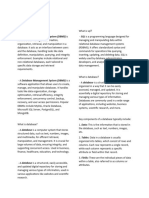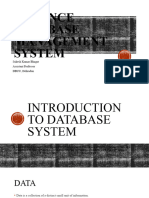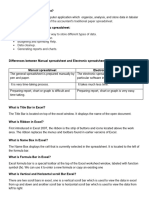0% found this document useful (0 votes)
7 views2 pagesDatabase Notes
A database is an organized collection of data that allows for efficient storage and management of various types of information, ensuring accuracy and consistency. Database Management Systems (DBMS) like MySQL and Oracle provide tools for data manipulation and security, supporting multi-user access. Databases can be relational, using structured tables, or NoSQL, offering flexible formats, with the choice depending on system requirements such as speed and scalability.
Uploaded by
hussainishorts313Copyright
© © All Rights Reserved
We take content rights seriously. If you suspect this is your content, claim it here.
Available Formats
Download as PDF, TXT or read online on Scribd
0% found this document useful (0 votes)
7 views2 pagesDatabase Notes
A database is an organized collection of data that allows for efficient storage and management of various types of information, ensuring accuracy and consistency. Database Management Systems (DBMS) like MySQL and Oracle provide tools for data manipulation and security, supporting multi-user access. Databases can be relational, using structured tables, or NoSQL, offering flexible formats, with the choice depending on system requirements such as speed and scalability.
Uploaded by
hussainishorts313Copyright
© © All Rights Reserved
We take content rights seriously. If you suspect this is your content, claim it here.
Available Formats
Download as PDF, TXT or read online on Scribd
/ 2



























































































